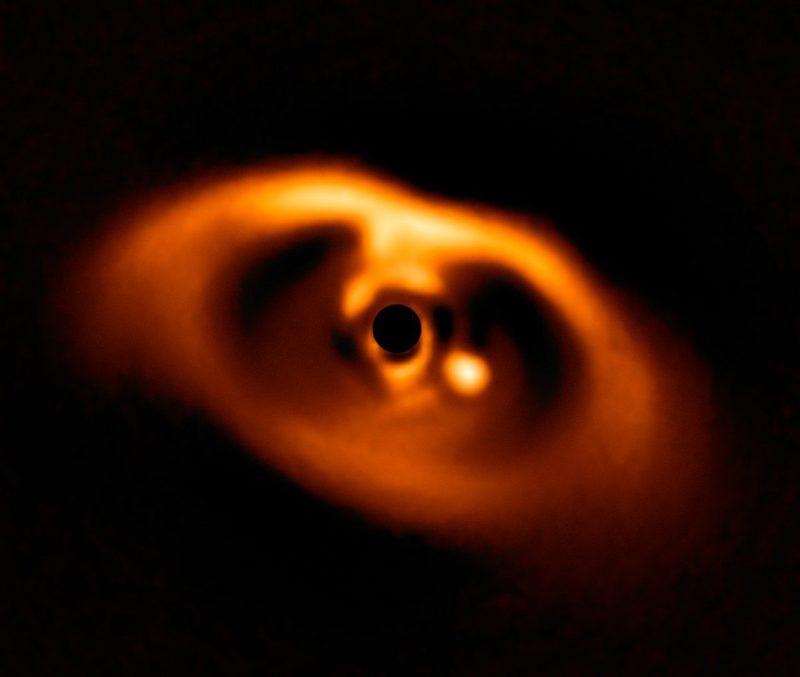Astronomi, sadarbībā ar pētīšanas grupu no Vācijas astronomijas institūta, ieguva attēlu kā veidojas jauna planēta diskā, kas ieskauj jauno punduri PDS70. Jauno planētu nosauca par PDS 70b. lai to atrastu, izmantoja instrumentu SPHERE no Eiropas dienvidu observatorijas.
Analīze ļauj domāt, ka planēta ir gāzveida gigants, kas ir pat lielāks par Jupiteru. Planētas virsmas temperatūra sasniedz apmēram 1000 grādus pēc Celsija, tāpēc tā ir daudz karstāka par jebkuru citu Saules sistēmas planētu.
Астрономы, во главе которых стоит группа исследователей из Института астрономии Макса Планка в Гейдельберге (Германия), получили изображение планеты, формирующейся в газо-пылевом диске вокруг молодой карликовой звезды PDS 70. Используя инструмент SPHERE, смонтированный на Очень Большом Телескопе, ученые впервые зарегистрировали молодую планету PDS 70b, прокладывающую себе путь в массе протопланетного материала вокруг молодой звезды.
Planet formation isn’t exactly the kind of thing that happens in the blink of an eye. New worlds form over extremely long stretches of time, at least on a human scale. They slowly build up mass from the dust and debris nearest to them, eventually forming the spherical shape we’re all familiar with. The discovery was made using the powerful planet-hunting tool called SPHERE, which is part of the European Southern Observatory’s Very Large Telescope. The instrument was able to spot a large mass of material — referred to as an accretion disk — surrounding a nearby star. Within that planet-forming cloud of debris, a planet is being constructed. In the image provided by ESO (seen above), the planet is seen as a bright mass to the right of its host star which has been blacked out by a mask that allows the surrounding detail to be seen.
